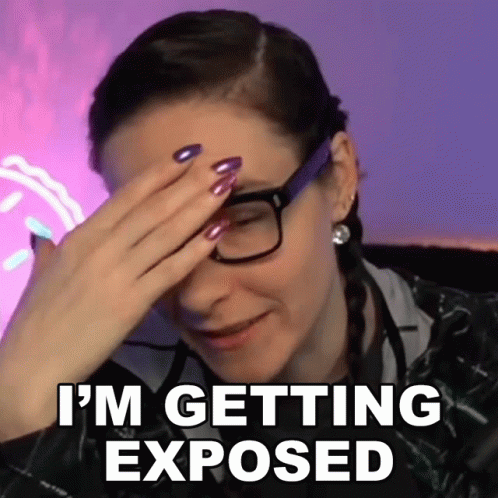The Trust Engine That Accelerates Everything
Perceived risk kills deals. Learn how to build complete executive credibility across competence, character, and leadership capacity to accelerate decisions and expand your career potential.
Welcome to Execs and the City, where we reveal how senior leaders really get paid, positioned, and promoted. Paid members get live office hours, dedicated career AI, our job search course, and more.
In high-stakes situations, perceived risk kills deals faster than perceived value closes them.
When decision-makers evaluate you—for a role, a partnership, or a major initiative—they're silently calculating risk before opportunity. Credibility—your perceived combination of competence, character, and leadership capacity—directly reduces this risk equation, accelerating decisions and expanding what's possible in every negotiation.
I once worked with a CRO who couldn't understand why he kept getting passed over for executive roles despite his exceptional credentials. In reviewing his interview patterns, we discovered he consistently deflected accountability for past failures and framed challenges as organizational problems rather than leadership opportunities.
This subtle pattern destroyed his character credibility despite his technical competence.
The TLDR takeaway—he perceived as arrogant.
After adjusting his approach to demonstrate ownership, his next interview cycle yielded three offers at higher levels than he'd previously targeted.
Robert Cialdini identifies authority and credibility as one of the six fundamental principles of influence—people follow credible experts. But true credibility goes far beyond titles or credentials. It's built through the consistent demonstration of competence, character, and judgment that creates trust even in uncertain situations.
It’s one of many reasons that career coaches promising quick fix solutions are full of it. Top leadership positions require decades of discipled habits that make up a masterful reputation.
The problem? Most executives focus exclusively on competence credibility: their experience, achievements, and technical expertise. While necessary, this one-dimensional approach ignores two critical credibility dimensions that actually drive high-stakes decisions.Let me show you how to build your complete credibility to transform how others evaluate your leadership capacity—and why it matters more now than ever before.
Why Credibility Matters More Than Ever
Credibility has always been valuable, but today it's become your defining career advantage. Your perceived trustworthiness creates the decisive edge in executive selection and advancement.
Think about your own experience.
When faced with difficult decisions, who do you instinctively trust? The person with the perfect resume but questionable judgment, or the leader who consistently demonstrates integrity and clear thinking even when it's uncomfortable?
The stakes have only increased with remote and hybrid work. When physical presence disappears, your reputation becomes your primary leadership interface. Without the advantage of in-person connection, your credibility—what others say about you when you're not in the room—becomes the currency that opens doors or closes them before you even arrive.
This plays out in three critical domains:
Decision Speed: High-credibility leaders receive faster approvals with less documentation and justification. Their word carries weight that eliminates friction.
Resource Allocation: Leaders with strong credibility secure more resources with less debate. Their requests are prioritized because past performance creates future trust.
Crisis Management: When challenges emerge, high-credibility leaders are given the benefit of the doubt while others face immediate scrutiny and second-guessing.
Your credibility isn't just one factor among many—it's the fundamental filter through which everything else gets evaluated.
Let's draft the Three Credibility Dimensions section, incorporating the research insights while maintaining your direct, accessible style:
The Three Dimensions of Executive Credibility
Most executives focus exclusively on their credentials and technical expertise, then wonder why their influence plateaus. Research shows that credibility enhances perceived power by up to 21% — particularly for those with limited formal authority. Yet true executive credibility runs deeper than your resume.
The strongest leaders build credibility across three distinct dimensions that create disproportionate influence:
1. Competence Credibility
This is your expertise, knowledge, and track record of results. While essential, competence alone is table stakes — necessary but insufficient for extraordinary influence.
Most executives overfocus here, believing their Harvard MBA or impressive P&L management will speak for itself. It won't. Even worse, overemphasizing credentials often backfires, creating the perception of arrogance rather than capability.
Strong competence credibility comes from:
Demonstrating relevant expertise without over-claiming
Showing pattern recognition across varied situations
Delivering consistent results through changing conditions
Maintaining currency in your field without chasing every trend
Example in action: When discussing your background, replace credential-heavy statements like "I have an MBA from Wharton and 15 years of experience" with impact-focused language: "I've led three major transformations where we increased EBITDA by an average of 43% while improving retention."
The first approach signals academic achievement. The second demonstrates practical impact that matters to the business.
2. Character Credibility
This is the perception that you operate with integrity, take ownership of outcomes, and align actions with stated values. Character credibility creates the trust foundation that makes your competence believable and applicable.
Strong character credibility comes from:
Taking extreme ownership of outcomes - especially failures
Maintaining consistent values across different contexts
Delivering on commitments, regardless of size
Speaking truth to power when politically easier options exist
The ownership formula: When discussing failures, use this structure: "Here's what happened, here's my role in it, here's what I learned, and here's how I've applied that learning." This approach demonstrates accountability while showcasing growth — a credibility multiplier.
3. Leadership Credibility
This is the perception that you can navigate complexity, influence without authority, and thrive in ambiguous situations. Leadership credibility creates confidence that you'll succeed in uncharted territory.
Most executives struggle here because they describe leadership in generic terms rather than demonstrating specific capacity through examples and approaches.
Compare these responses to the same question about managing conflict:
❌
Weak: "I believe in addressing issues directly while maintaining respect for all perspectives."
✅
Strong: "When integrating the private equity acquisition, we faced resistance from three key technical leaders. I identified their core concerns about architecture autonomy, created a joint governance model that preserved their decision rights while ensuring alignment, and established clear escalation protocols. Within six weeks, our strongest opponents became our most vocal champions."
The first response offers platitudes. The second demonstrates proven leadership capacity through specific actions and outcomes.
Strong leadership credibility comes from:
Navigating complex stakeholder landscapes successfully
Creating clarity and direction amid ambiguity
Building coalitions across organizational boundaries
Making sound decisions with incomplete information
The executives who master all three credibility dimensions don't just become more influential—they become the obvious choice in a field of qualified options. They receive the benefit of the doubt in difficult situations, gain approval with less documentation, and secure resources with minimal resistance.
Remember: Your competence gets you considered. Your character gets you trusted. Your leadership capacity gets you selected.
The Three-Phase Credibility Progression
Sophisticated credibility-building advances through three distinct phases. Most executives never progress beyond the first, severely limiting their negotiation leverage and career trajectory.
Phase 1: Establish Baseline Credibility
This foundational phase qualifies you for consideration. It's where you demonstrate relevant expertise and experience that justifies your place at the table.
Take your credibility a step further by leveraging existing relationships. Establish credibility through association by noting shared connections: "I understand why Justin suggested we connect—our approaches align closely." This activates social proof and tribe thinking. Decision-makers unconsciously think, "If Justin values this person, they likely deserve my attention as well."
This subtle technique transforms cold credibility into warm introduction, bypassing typical skepticism executives face when establishing their baseline value.
Practical approach: Before important conversations, identify mutual connections and reference them naturally. Don't name-drop gratuitously—find real connection points that create bridges.
Phase 2: Create Distinctive Credibility
This is where you separate yourself from equally qualified peers by revealing insights or approaches that demonstrate not just knowledge but perspective.
When everyone has impressive credentials, distinctive credibility becomes your competitive advantage. It signals that you don't just know the standard playbook—you've written additional chapters.
Script example: "Based on my analysis of your position and the recent regulatory changes, there's an overlooked opportunity in the mid-market. Most companies are focusing on enterprise expansion, but the compliance requirements have created a 90-day window for a company with your technical architecture to capture significant mid-market share before larger competitors can adapt."
This level of specific insight instantly separates you from others with similar qualifications. It signals that you don't just understand the general landscape—you see patterns and opportunities others miss. In other words, have a strong opinion and lean into it.
Practical approach: Before significant meetings, prepare at least one distinctive insight that demonstrates your unique perspective. This isn't always about being contrarian—it's about showing depth of thinking and foresight that creates disproportionate value.
Phase 3: Build Trust-Based Credibility
This highest form of credibility comes from demonstrating judgment, self-awareness, and accurate self-assessment that reduces perceived implementation risk.
Trust-based credibility emerges from what I call "earned wisdom"—the kind that only comes through genuine experience with both success and failure.
Technique: Share what you've learned not to do. Most executives only highlight successes, but acknowledging the approaches you've tried and abandoned demonstrates genuine mastery: "I've learned to never launch transformational changes without first mapping the informal influence network. Technical readiness matters far less than organizational readiness."
When you acknowledge limitations rather than hiding them, you create paradoxical strength. You demonstrate the confidence to be honest about boundaries and the wisdom to know where they are.
Power move: When asked if you have experience in a specific area where your background is limited, don't exaggerate or defensively pivot. Instead, respond: "I haven't led that specific type of initiative, but here's what I learned from adjacent experience, here's how I'd approach learning what I don't know, and here's who I'd bring in to complement my skills in that area."
This level of candor, paired with a solution-oriented approach, builds more credibility than claiming capabilities you don't fully possess. It signals both self-awareness and problem-solving orientation—a powerful combination.
The executives who progress through all three phases don't remain commoditized talent—they become distinctive assets whose value transcends their formal roles or titles.
Here's the next section on the credibility multiplier effect:
How Credibility Transforms Your Value
Credibility isn't just another leadership quality. It fundamentally changes how others perceive everything you say and do.
When someone with low credibility presents an idea, it gets scrutinized, questioned, and often rejected—regardless of its merit. When someone with high credibility presents the exact same idea, it gets immediate consideration, support, and resources.
I saw this play out dramatically when a new CTO joined a struggling supply chain company. In his first meeting with the board, he proposed the exact same cost-cutting measures his predecessor had presented three months earlier—measures that had been rejected as "too aggressive" and "potentially damaging to operations."
The board approved his identical proposal unanimously.
What changed? Not the strategy—the credibility of the person presenting it.
High credibility creates three immediate advantages:
1. Decision Acceleration
Trust eliminates friction. When you've built strong credibility, decision cycles compress dramatically. You receive approvals with less documentation, fewer reviews, and minimal deliberation.
I regularly watch executives with weak credibility spend months building elaborate business cases to justify initiatives, while their high-credibility counterparts secure similar approvals with a single conversation.
2. Risk Perception Reduction
Credibility directly lowers how others perceive the risk of your proposals. The stronger your credibility, the more comfortable decision-makers become with uncertainty or incomplete information.
This creates a big advantage: the executives who need perfect data the least are the ones most likely to receive it. Meanwhile, those with weak credibility face increasing demands for certainty that can never be fully satisfied.
3. Expanded Possibility Range
Perhaps most powerfully, high credibility expands what others believe you can accomplish. It creates a halo effect that extends beyond your proven capabilities into adjacent domains.
This explains why some executives get approved for stretch assignments with minimal debate, while others struggle to secure roles directly aligned with their experience. The difference isn't just capability—it's the perception of possibility that strong credibility creates.
The most powerful credibility moves are often counter-intuitive. While average executives try to appear flawless, the strongest leaders:
Acknowledge limitations directly
Express genuine uncertainty when appropriate
Show precise self-awareness about development areas
Take ownership of failures without qualification
Demonstrate humility about what they don't know
These moves don't diminish perceived capability—they enhance it by demonstrating the judgment, honesty, and self-awareness that create exceptional leadership.
When it comes to maximizing your compensation and wealth, you want to be someone who is perceived to always expand ranges — or grow the pie — as negotiators would describe this. This perception helps you smooth friction during negotiations, and oftentimes, eliminates the speedbumps before they ever occur.
Remember: Your technical expertise gets evaluated based on what you know. Your leadership capacity gets evaluated based on how you handle what you don't know. Mastering both dimensions transforms how others perceive your value in ways that credentials alone never will.
Here's the next section on common credibility mistakes:
The Five Credibility Killers
Even the strongest reputation can collapse overnight through critical credibility mistakes. I've watched brilliant executives undermine years of trust-building through these common errors:
1. The Expertise Overreach
Nothing destroys credibility faster than claiming expertise you don't possess. When you overstate your knowledge or experience, you don't just damage credibility in that specific area—you create doubt about everything else you've claimed.
I witnessed a COO lose board trust when he confidently declared "extensive experience" with a technical framework, only to be exposed moments later by basic questions he couldn't answer. The board didn't just question his technical knowledge—they began doubting his operational judgments as well.
Solution: Replace "I'm an expert in..." with "Based on my experience with..." This subtle shift acknowledges your relevant background without overclaiming. When outside your core expertise, simply state: "That's not my area of strength, but here's how I'd approach it..."
2. The Accountability Dodge
When things go wrong, weak executives instinctively protect themselves through subtle deflection:
"The team missed the deadline..."
"Market conditions changed unexpectedly..."
"The data we received was flawed..."
These statements might be factually accurate but signal a leadership deficit. They create a credibility leak that compounds over time.
Solution: Adopt extreme ownership. Lead with "I missed this" or "I failed to anticipate" before explaining contributing factors. This approach doesn't magnify your failure—it demonstrates the leadership maturity that builds deeper trust. Wins go to the team, losses go to you.
3. The Consistency Gap
Nothing erodes credibility more insidiously than the gap between what you say and what you do. When you emphasize values like transparency but withhold information, or champion work-life balance while sending midnight emails, you create perception fractures that undermine everything else you communicate. Hypocrite.
Solution: Identify your non-negotiable values and audit your behavior against them regularly. Where gaps exist, acknowledge them directly rather than hoping no one notices.
4. The False Certainty Trap
In leadership environments that reward confidence, many executives fall into artificial certainty—making definitive claims about uncertain outcomes. When those predictions inevitably miss, credibility suffers.
I've coached multiple executives who damaged their reputations not through major failures but through a pattern of overpromising on timelines and results that created credibility erosion.
Solution: Be precise about certainty levels. Learn to distinguish between "I'm confident we can..." (when evidence supports) versus "I believe we should..." (when pursuing calculated risks) versus "We're exploring whether..." (when genuinely uncertain).
5. The Relationship Imbalance
The strongest credibility emerges from balanced relationships, where you provide value before extracting it. Executives who only appear when they need something quickly develop reputational debt.
Solution: Create a deliberate value-first approach to key relationships. Track your deposits and withdrawals of organizational capital to ensure you maintain a positive balance.
These credibility killers share a common thread—they feel expedient in the moment but extract devastating long-term costs. The strongest executives make short-term credibility investments that yield compound returns over their careers.
Conclusion: Building Your Credibility Foundation
Exceptional credibility isn't an accident—it's built through daily habits and deliberate practice:
Daily credibility investments: Make small, consistent deposits in your credibility account through reliable follow-through on commitments of all sizes. Remember that minor promises kept build as much trust as major ones.
Deliberate transparency: When facing challenges, share information early rather than waiting until forced. This approach transforms potential credibility threats into trust-building opportunities.
Recovery: Even with perfect intentions, you'll occasionally make credibility missteps. Don't hide them—address them directly: "I missed this commitment. Here's what happened, what I learned, and how I'll prevent it going forward."
Feedback calibration: Regularly check how others perceive your credibility by asking trusted colleagues: "Where do you see gaps between what I say and what I do?" This external perspective prevents blind spots.
Your credibility isn't just one leadership dimension among many—it's the foundation that determines how everything else you do gets perceived and valued. In today's environment where technical expertise becomes increasingly commoditized, your credibility becomes the decisive differentiator that transforms how others categorize your potential.
Next week, we'll explore Intentional Positioning—how you strategically frame your contributions and value to control perception. Like a masterful political strategist, you'll learn to shape the narrative around your work before others define it for you. You'll discover how to deliberately shape how others categorize your potential rather than merely evaluate your history.
If this article helped you, consider upgrading to a paid subscription to unlock all of our content and subscriber perks. You'll get access to our toolkit, including deep interview prep, expert courses, and free resume and LinkedIn tools.
Stay fearless, friends.







